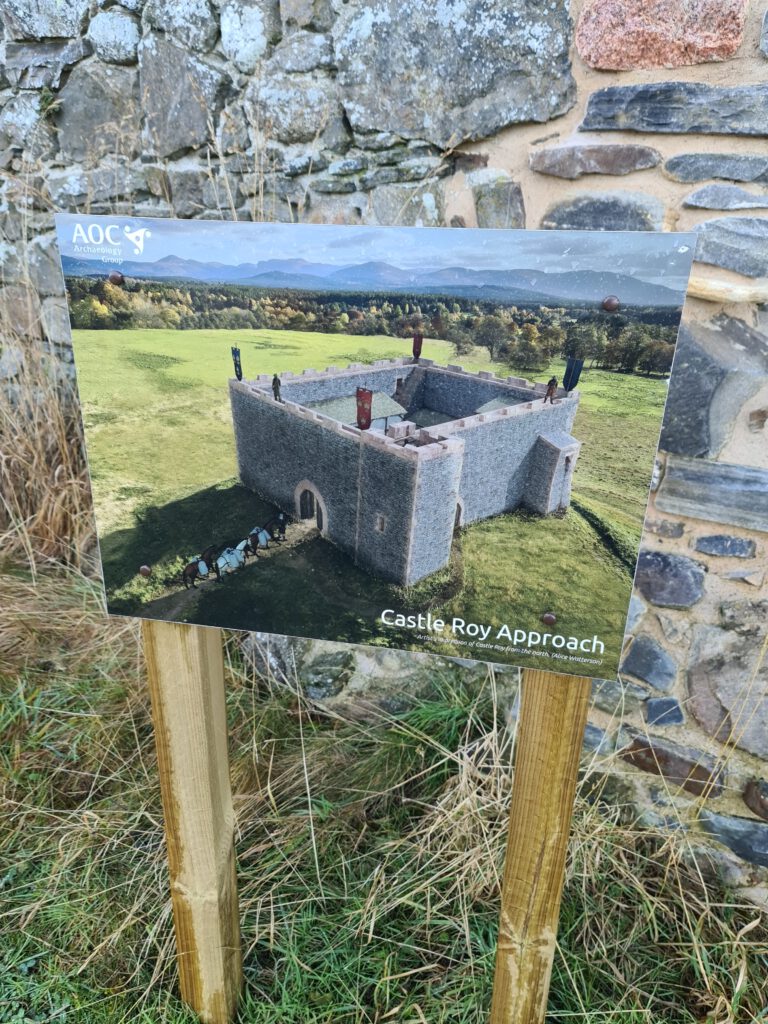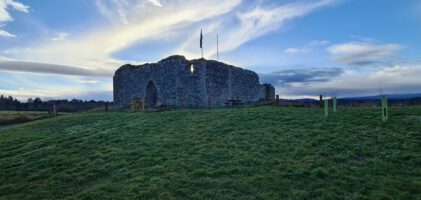Location: just north of Nethy Bridge, on the B970, Strathspey, Highlands of Scotland
kind of castle: 12th-century courtyard castle
today: open to the public, parking spaces and picnic benches
public transport: regular buses between Grantown-on-Spey and Nethy Bridge stop at Balliemore Road End, Nethy Bridge which is only a short walk from the castle
scheduled monument: no
managed by: Castle Roy Trust
entrance fee: £ 0
opening times: 24/7, all year round
directions: Google Maps

Castle Roy is definitely a place not many people have heard of or thought about visiting, yet it doesn’t lack in history. Only recently being restored to some degree to create a save experience for visitors, it opened in September 2022 as an interesting site to visit especially when travelling on the A95 or visiting Nethy Bridge anyway.
There is much that can be said about Castle Roy, however, nearly nothing of which is certain, the only certain thing known about Castle Roy for sure is that its past is a big mystery throughout most of the time. As rich in history as this castle might have been a lot of the following is just theory, since this history has been lost throughout the years, maybe will stay lost forever.

Often reported as the oldest masonry fortification in Scotland it is safe to say that Castle Roy is at least amongst the oldest for sure, with it being built some time between 1190 and 1220, given findings of carbon dating. The fact that a lot of its history is lost might be sad in historical aspects, but it is great if you think about this former 12th century fortress, located on an ancient glacial mound as they can be found through the whole area.
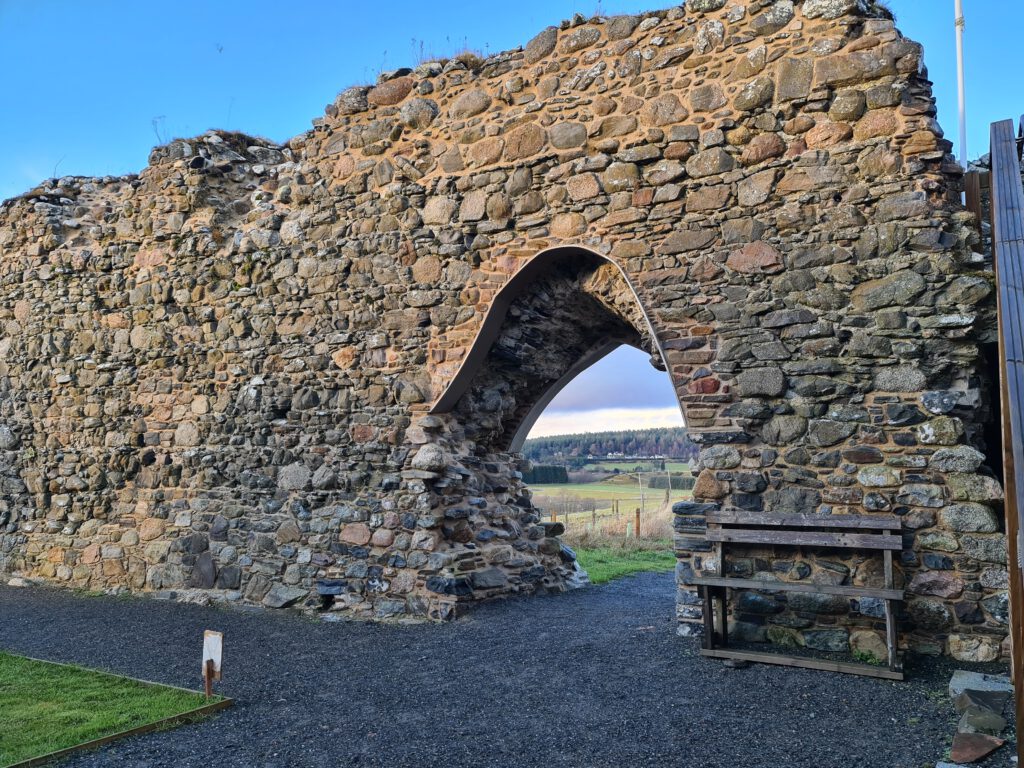
With the walls being an approximate height of 7.5 metres the fortress does still look impressive to this day, having connections with many a famous name and clan throughout its years, those include the names of Mar, Comyn, Stewart and Grant, all of which are well-known in Strathspey with the Grants still being one of the common clans in the area, to this day. Castle Roy or the Lands of Abernethy have a tight connection to the clan as well with much of the country being rented by the crown, to the Grants, from 1560 onwards.

Today what you will see upon approach is the tower on the north-western corner of the castle, which must have been added throughout the years but most likely around the 15th century when the wall was made higher as well, this is suggested by the fact that the tower walls are way thinner than the curtain wall. Next to the tower there is a small entrance to be found, which was most likely used by servants back in the day, on the same wall, the west wall, you can find what formerly has been the two-story latrine, otherwise known as the Garderobe (which is funny cause Garderobe is also a German word meaning changing room). Along the north wall you will see the impressive 2m archway which once was the main entrance to the castle.

The previously mentioned tower is special today cause of many things, one of them being that it contains the only remaining window lintel of the castle (it is thought that most of the windows will have been further up the wall and with that part of the wall gone there is no evidence of other windows that can be found), the other being the stunning views you have from the mound in general but especially from the build platform on the tower. Enjoying the 360° views towards the Cairngorms, to Castle Roy’s very own Highland Coo Murdo, and the lands below you is a must do when visiting Castle Roy.

As previously mentioned, there are a lot of famous names throughout Scottish History, involved with this castle which is also due to it changing hands quite a couple of times mostly due to marriage and alliances, the amount varying with the different versions of the little past you can find traces of.
Alexander II granting James Earl of Mar, the Lordship of Abernethy in 1226 is one of the first things known about the area surrounding the castle. It is certain that James was succeeded by his brother Duncan who managed to rule Mar until 1244 only to be succeeded by his son William who is sure to have married the daughter of the Earl of Buchan and by that married into the powerful Comyn family.

From now on there is nearly nothing certain in the history of Castle Roy anymore. Some say that the castle must have stayed in the Comyn family until they were forfeited to the Crown in 1306, after Robert the Bruce came after the Comyns. If you follow this version of stories, you will find that the earldom later was granted to Bruce’s nephew, one Thomas Randolph, but in the written down records of this event there are information given which do lack of explicity. But still, this is the theory I will stay with on here since all the other ones are very difficult and confusing and, in the end, leading to the same event with Thomas Randolph anyway.
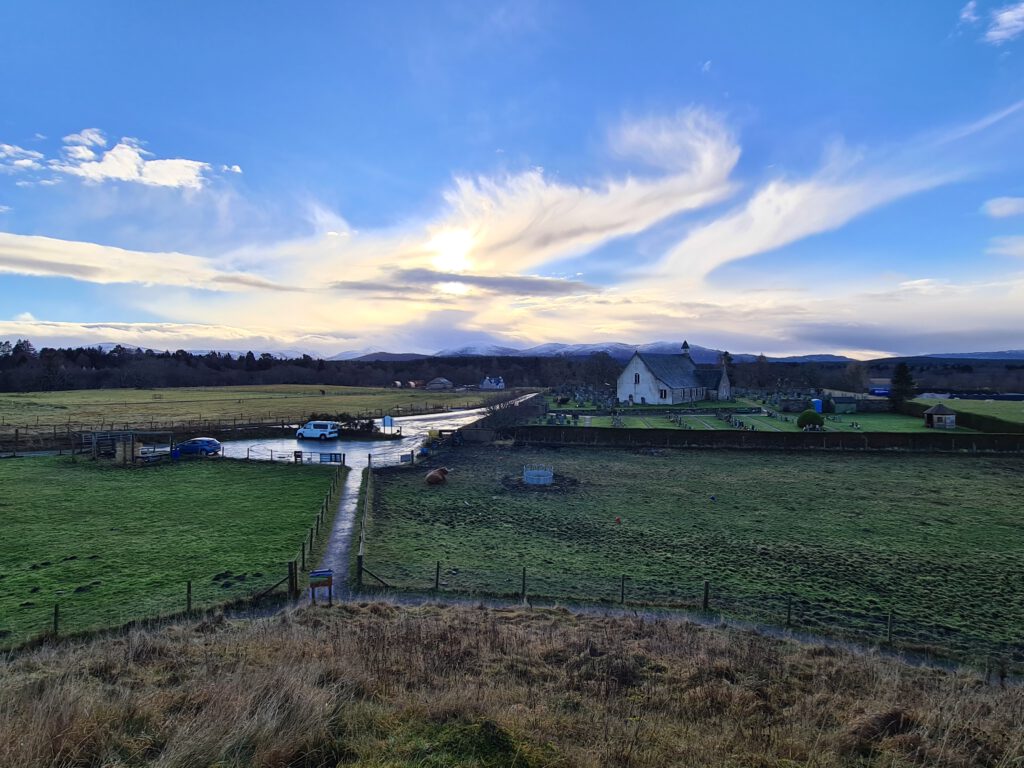
The time inbetween Thomas Randolph taking over and the title being granted to Alexander Stewart, Earl of Buchan and Lord of Badenoch, in 1381 is again very uncertain but it is thought that the Lord of the Isles of that time was somehow involved and maybe even kept the lands for a short while. With the rivalry between the Stewarts and the Lords of the Isles it wouldn’t be a wonder if the lands were granted to Alexander Stewart after having been taken off the Lord of the Isles by the Crown.

Though in the hands of the crown before passing on to Alexander it is very unlikely that much was done by the crown about previous destructions at the castle which might have existed, the grounds were more important back then. It is most likely that it was Alexander who brought the castle back to a more acceptable standard in regards of defence.

With the castle not being an impressive residence for someone with a high status such as Alexander, it is most likely that he had one of his sons stationed there instead of himself. Alexander was succeeded by his son Alexander, and it was around that time that the lands turned back towards the name of Mar, Alexander married the widowed Countess of Mar. After the death of Alexander, the lands of Abernethy turned back into the hands of the Crown for about 66 years in total.

I personally would say after this the lands stayed in the hands of the crown a little longer still since James IV granted them to his son James Stewart in 1501 alongside the Earldom of Moray, basically still a Crown property…

However, the Earl granted the lands to John Grant of Freuchie for a rent of 40 Pounds. After the death of James Stuart, in 1544, the rent was paid to the crown for a little while, but the clan grant kept renting the place. Five years later the Earl of Huntly oversaw collecting the rent from the Grants and kept on doing so until 1560 when Mary Queen of Scots appointed her half-brother James Stewart, the first Earl of Moray. Still, he rented the lands of Abernethy to the Grants though.

In 1592 the third Earl of Moray was still a minor, but when he came of age, he set the arrangement with the Grants in stone and so John Grant of Freuchie received a charter that granted him the “Lands and Lordship of Abernethy”. In June 1609 this charter was confirmed by the Crown by James VI.
And this is where the knowledge about the castle ends. Thought to not having been inhabited for long after 1609 if at all, the Old Statistical Account of 1794 recorded that the castle was neither roofed not inhabited and that there was no history attached to the old building.

There are many years of history missing but with an open imagination and knowledge about the history of the surrounding areas there is lots that can be guessed.
It took until 1994 before the castle’s history got better. Being purchased by the Castle Roy Trust in that year it was restored and stabilised in areas. The restoration work took up until 2022 and so the castle has only recently been opened to the public in September 2022.
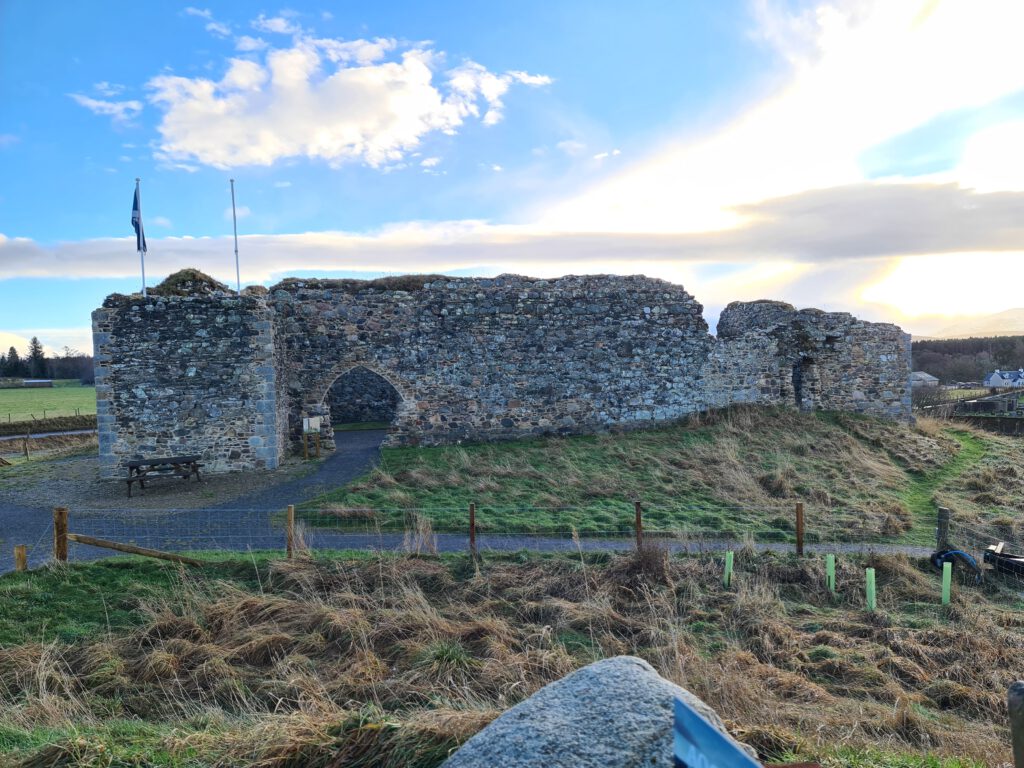
Managed as a free site to visit by the Castle Roy Trust donations are very much appreciated and help to keep the place open for learning and experiencing. Some experiences offered by the Trust are events such as weddings of all sizes, Picnic areas at the castle and a parking space which can function as a motorhome stopover, but please no littering or emptying of wastewater here!

It is a beautiful place to visit and enjoy a couple of hours even when making a picnic, the views towards the Cairngorms and the surrounding area are truly breath-taking and though I visited in winter it was amazing there with so much room left for speculations. I really recommend leaving a small donation for the important and amazing work the Castle Roy Trust has done there and keeps on doing to keep a nearly all lost part of Scottish History alive.
